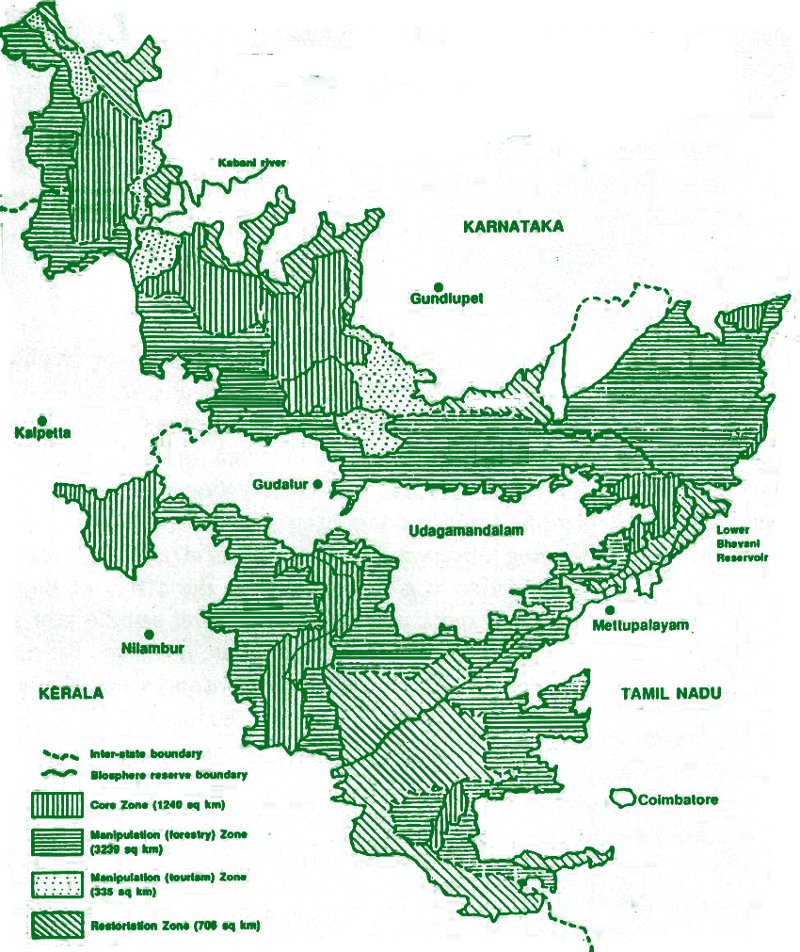Fauna and Flaura face endangerment at Nilgiri Biosphere.

- Year of Establishment = 1986
- Core Area = 1240.3 km2
- Buffer Area = 4279.7 km2
- Total Area = 5,520 km2
- Flora = Over 3,300 Species
- Fauna = Over 916 Species
- Moist Deciduous Forests, Southern Ghats
- Montane Rain Forests, Southern Ghats
- Dry Deciduous Forests, South Deccan Plateau

Endemic & Endangered Species:
- Lion-Tailed Macaque
- Nilgiri Tahr
- Toda Buffalo
- Awvul Grass
- Vanda
- Liparis
- Bulbophyllum
- Thrixpermum
- Ananphalis Nilgirana
- Helicrisum Wightiana
- Andropogon Polyptychs
- Sholas
Impacts of global warming and greenhouse effect are seen as climate change in several parts of the world.
Few of these threats :
- Increase in events of extreme rainfall
- Decrease in events of moderate rainfall
- Gradual Rise in Temperatures
- Increase in Human Activities : Construction of hotels, weekend retreats, bungalows, etc.
- Decrease in natural forest cover from 1306.5 km2 to 1301.7 km2
Because the spread of the Biosphere is huge, the impacts of these threats are not the same through out. The change is different for the northern and southern parts.
These threats have brought about a change in the long term patterns of the biosphere by disrupting them. The increase and decrease in events of rainfall has resulted in an overall decrease in the annual rainfall. Erratic rainfall patterns affect the complete ecology. On one hand, increased extreme rainfalls wash away layers of soil reducing the fertility of the land while on the other hand decreased moderate rainfalls result in low yield of vegetation.
Decrease in moderate rainfalls also results in greater temperature variations. This coupled with gradual increase in temperatures affects the complete reserve. One such effect in the reserve is the drying up of several swamps which are the natural growth site for Awvul grass. Similarly, gradual rise in temperatures are affecting other endemic species like Ananphalis Nilgirana, Helicrisum Wightiana, Andropogon Polyptychs and many more.
Threats by human activities have been the cause for the reduction in its natural area since the colonial period. Most activities resulted in the cutting down of grasslands for the purposes of tea plantations, planting of exotic species of plants for providing firewood and paper etc. The natural habitats of Nilgiri Tahr and Toda Buffalo are also under tremendous owing to the reduction in grasslands to cultivate exotic species like eucalyptus. Recent increase in human activities in the biosphere is in response to the relentless commercial pressure for the development of resorts, weekend retreats, farmhouses and bungalows.

